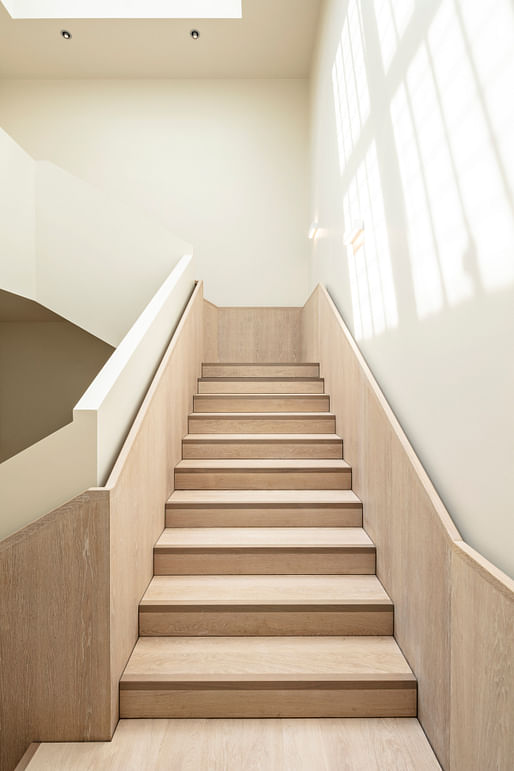
Snøhetta has unveiled a new extension and landscape design for the Ordrupgaard Museum in Denmark.
Originally built as a three-winged, neo-classical country mansion during World War I, the museum was expanded by a modern glass and black lava concrete extension in 2005, designed by Zaha Hadid. Snøhetta’s design creates a holistic and continuous path throughout the museum and its surrounding park and gardens, linking Hadid’s intervention with the museum’s original building and permanent collection. This project comprises landscape interventions along with five brand new, subterranean exhibition spaces.
The Ordrupgaard Museum is located north of Copenhagen and houses Northern Europe’s most comprehensive collection of French and Danish art from the 19th and early 20th century.
Out of the new exhibition spaces, two create a continuation of Hadid’s extension, and the remaining three are dedicated to one of the museum’s main attractions: its extensive and permanent collection of French impressionist paintings. The largest of the three can be partly seen from the outside as a monolithic, steel-coated structure. The volume is somewhat submerged and disconnected from the surrounding space. Snøhetta describes it as a “hidden treasure that reveals itself as it appears during excavation.”
Dubbed “Himmelhaven,” or “Heaven’s Garden,” its design is informed by the impressionist art period through its ability to capture and bend light with its shifting steel surface. The extension is further characterized by a diagonal cut that leads visitors to the main entry of Hadid’s addition. A partially sunken mini-atrium surrounds the extension, offering a space where visitors can sit and enjoy the views of the surrounding park.
During the construction phase, Snøhetta’s landscape team worked meticulously to safeguard the protected park, ensuring a surgical-like cut between the surrounding park and the new extension. The firm also altered the landscape surrounding Hadid’s extension with great care, planting the hillside with meadow flowers, partially excavating the building, and integrating it with the two Hadid-inspired, underground exhibition spaces.
While these two exhibition spaces mark a continuation of the dark concrete materiality used in Hadid’s design, the other three dedicated to the museum’s impressionist art are characterized by a much lighter color and material palette. The spaces were designed in close collaboration with the museum and are all furnished with oak floors, walls, and ceilings, providing a light, organic, and warm atmosphere.
Gypsum boards are mounted on the walls allowing for the museum to effortlessly curate art pieces and change the color palette of each exhibition room when needed. The exhibition ceilings are covered with oak veneer cassettes with integrated light installations, providing a seamless and harmonious design that “places the art pieces at the center of attention.”
The inside of the exhibition spaces creates a sense of softness and comfort, contrasting the reflective steel exterior that is seen from outside. According to Snøhetta, this echoes “the design of a classic vintage jewelry box, with its hard, metallic exterior and soft, velvety lining on the inside.”

Throughout the museum journey, natural daylight penetrates the spaces, creating clear transitions from one building to the next.
Snøhetta’s extension for the Ordrupgaard Museum blends in with the existing surroundings while adding its own interpretation of the place, creating a connected and enriched museum experience.
No Comments
Block this user
Are you sure you want to block this user and hide all related comments throughout the site?
Archinect
This is your first comment on Archinect. Your comment will be visible once approved.